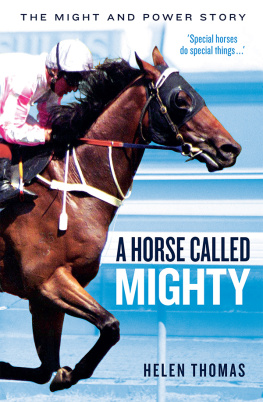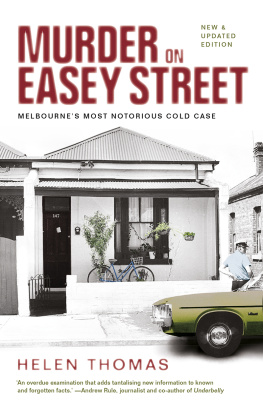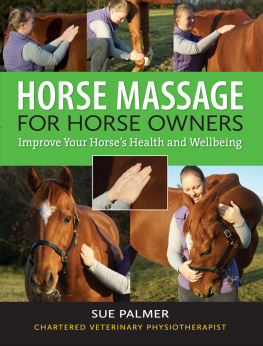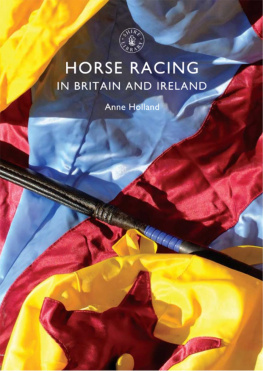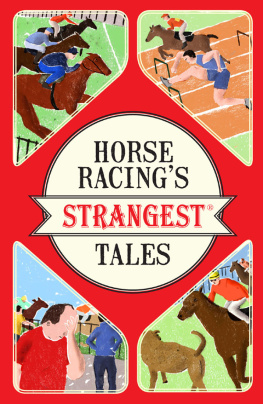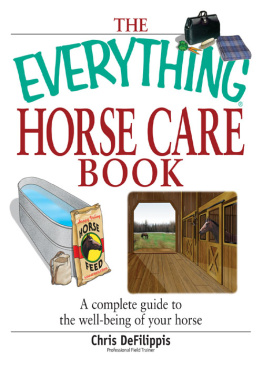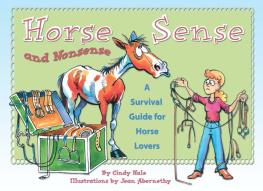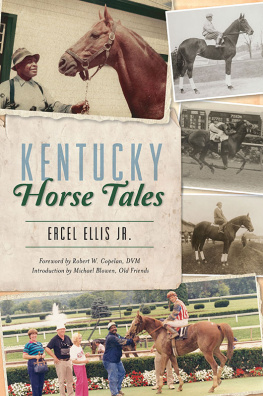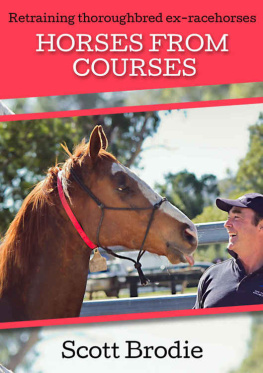Published by Nero,
an imprint of Schwartz Publishing Pty Ltd
Level 1, 221 Drummond Street
Carlton VIC 3053, Australia
www.nerobooks.com
Copyright Helen Thomas 2007
First published by Random House Australia in 2007. This edition published in 2017.
Helen Thomas asserts her right to be known as the author of this work.
ALL RIGHTS RESERVED.
No part of this publication may be reproduced, stored in a retrieval system, or transmitted in any form by any means electronic, mechanical, photocopying, recording or otherwise without the prior consent of the publishers.
National Library of Australia Cataloguing-in-Publication entry:
Thomas, Helen, 1955 author.
A horse called Mighty: the Might and Power story / Helen Thomas.
9781863959322 (paperback)
9781922231673 (ebook)
Might and Power (Race horse). Race horsesAustraliaBiography.
Cover design by Tristan Main
Cover photograph by Bruno Cannatelli
For Max and Elaine, always
ALSO BY HELEN THOMAS
Moods: The Peter Moody Story
The Horse that Bart Built: So You Thinks Incredible Journey
Life With Rosie: The Highs and Lows of Raising a Racehorse
42 Days at the Races: A Punting Adventure
Past the Post: What Great Horses Do When They Leave the Racetrack (with Lorrie Graham)
PROLOGUE
TWO MINUTES AND 26 SECONDS
T here is a point in every horse race when time seems to stand still, to hang in the air.
As the starters bell rings and the barriers crash open and the thoroughbreds push back on their haunches, jockeys poised, they are held in an invisible frame of suspense. For one elongated second, nothing at all seems to happen. A hush envelopes the track. Then comes an extraordinary explosion of movement and sound, a spectacular rush as the horses surge forward literally flying from their gates.
It is at this moment the psychological battle begins and often ends in a race, as riders try to place their mounts to best advantage for the long haul home. Decisions that change lives are made in a heartbeat.
The jockey on the big horse understood this better than most. He read the start of a race as a painter pondered new canvas.
And on this day, the rider knew that if they were to win this race one of Australias toughest races he and this horse had to achieve the impossible. He knew, too, that they might just be able to do it. Even from a distance, the big horse was an impressive character. The kind of horse one might expect something from on a racecourse.
Tall, his broad chest set on rolling, muscular shoulders, his coat a deep, dappled brown, he had an athletes girth and a granite hindquarter. And his large, quick eyes took in everything going on around him. He wasnt handsome, not exactly. But he looked like a horse to rely on.
If it wasnt for the fact that he walked funny and ran even funnier, throwing one of his front legs in the air at the oddest angle he almost fit the bill as the perfect thoroughbred. As if to highlight this description, he had an artists temperament, and worked himself into quite a theatrical performance before every race.
Where perfect thoroughbreds serenely surveyed all around them, this one seemed to stoke a fire prancing and reeling around the mounting yard, front legs in constant jig, ears flicking, those intelligent eyes darting every which way behind blue blinkers.
Like a comic book hero donning costume and mask for action, this otherwise kind horse who liked nothing better than to lick his strappers face after breakfast each morning fashioned himself into a whirling dervish come race time.

Who could blame him? He had much to prove, a ledger to balance. Thoughtfully if not regally bred, he had been overlooked in the heady glare of the sale-ring, then purchased by one of Australias most respected thoroughbred judges. As a youngster, he exhibited enough potential to excite even hardened track-watchers. Yet, while promise fuels the world of racing, it can be easily doused. At the age of four, the horse had to step up to a high mark that, in a way, he had helped set himself. If he couldnt, his star would fade.
As he and his jockey sashayed on to the Caulfield track on that third Saturday of October in 1997, none of this seemed to interest racegoers one way or the other.
At his last start, in Sydney, he had failed to run a place on face value a lacklustre performance, but not one alarming enough to worry racing authorities or to push his stable, reluctant to talk to the media at the best of times, to offer any explanation. To further complicate the puzzle, the jockey who had been riding him had been unceremoniously dumped, another installed.
The replacement was not just any rider. He was the most controversial jockey in Australasia. Hailed as precocious as an apprentice and, later, a genius in the major, big-money races, he had a different score to settle. Regarded as one of the worlds most gifted horsemen, he had just endured a riding disqualification that cost him his marriage, his house and to some degree, his good name.
To rise above it all, he knew he had to find a good horse, perhaps the horse of a lifetime. He knew, too, this was asking for the rarest of miracles. As a top jockey, he had already been luckier than most when it came to good horses. He knew the odds of another coming his way were against him. Still, he had always had a feeling about this big brown horse, a sense that he would measure up at the highest level.
Two years earlier, the jockey had been charged with bringing racing into disrepute for pretending to fix races, an allegation he strongly contested. He had served his time, initially banned from any racetrack for three years, but innuendo continued to stalk him. He had to shake the shadow. And Victorias famous Spring Racing Carnival was the place to try. So, just as the horse wound himself into a tight coil of excitement on this particular afternoon, his rider tried to unwind, to forget everything that made this race so important.
The nations punters were unmoved by his plight, and unwilling to buy into such an eccentric combination that, on top of everything else, carried saddlecloth number 13 onto the track. Even the pairs most loyal fans werent throwing money on them with bookmakers, and they headed onto the Caulfield track for the big race at odds of 8/1. All things considered, it was a pretty fair assessment.

The Caulfield Cup is one of the few events on the racing calendar that all Australians know, a sporting contest they recognise. A handicap run over 2400 metres, it is a genuine stayers test, a lead-up to the nations beloved Melbourne Cup. It is also one of the most difficult races to win, over a course with tight, uncharitable turns. It usually becomes a rough-and-tumble affair, a jumble of tactics, as traditionally large fields jostle for position. In 1865 a jockey was killed when 16 of the 44 starters fell in the race. Now a maximum of 18 face the starter. The best horse often wins, but must face a breathtaking, knock-down fight for the honour.
This particular Caulfield Cup looked like following the pattern: 18 horses set to skirt and skirmish, 18 riders keen to scout the quickest way home to the $2.5-million purse. But the rider on the big horse had a plan. An unorthodox one, he knew, and not a strategy that would please either his mounts owner or trainer. But a plan, nevertheless. He had been instructed to steady the horse in the early part of the race, to position him back in the field. Yet he was convinced this was precisely the way to ensure they were beaten.

